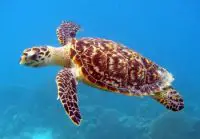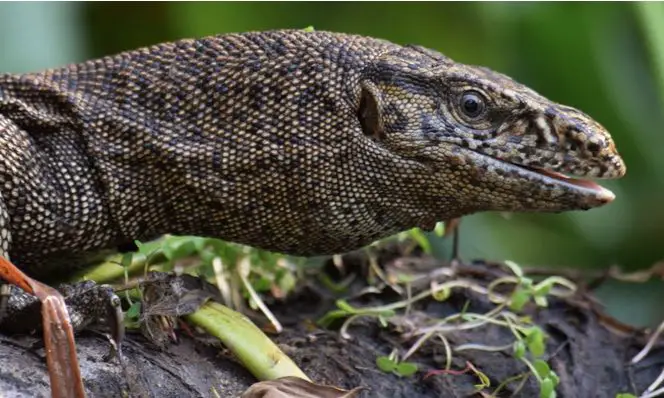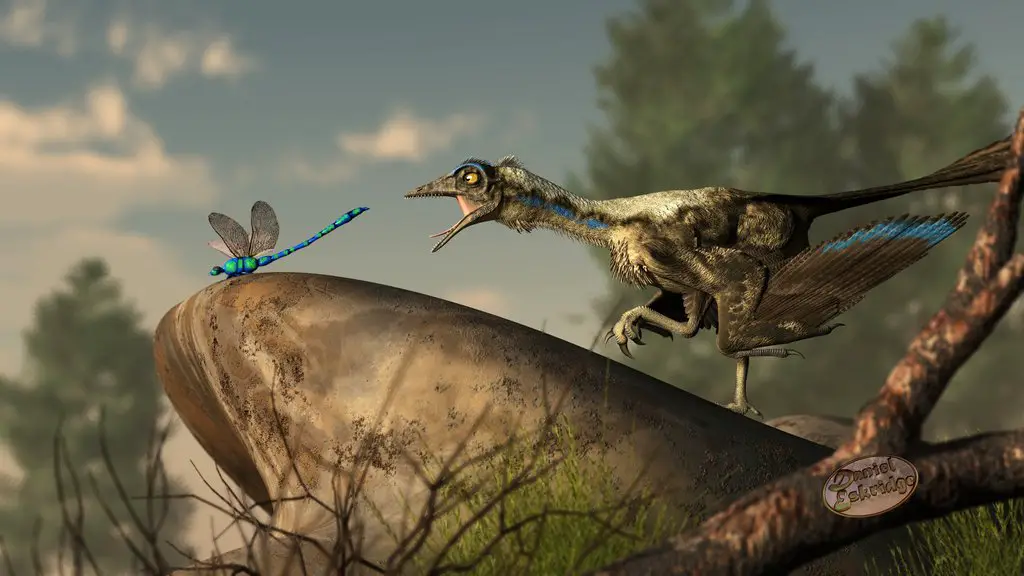Hawksbill sea turtle (Eretmochelys imbricata) is a highly migratory and solitary species. From the genus Eretmochelys, hawksbill is the only surviving species. The head of a hawksbill turtle is tapered and it is shaped like a curved beak. The edges of the upper shell of hawksbill are very sharp. Hawksbill has levelled body and its upper shell (called carapace) changes its colors. Its carapace has yellowish background and it is streaked with black. On each flipper, there are two claws.
On average, the length of a hawksbill turtle is 91 centimeters and a weight of 180 pounds. The weight of the heaviest turtle is 280 pounds. At birth, the hatchling is 2.5 centimeters in length and weighs around 24 grams.
On average, hawksbills have a lifespan of 30 to 50 years.
Hawksbills reach maturity at the age of 20 years. Mating season begins from April until November. In the Indian Ocean, mating season is between September and February. The Seychelles, Australia and Mexico are the most common nesting beaches for these turtles.
Hawksbill lays a clu tch size of about 140 eggs.
tch size of about 140 eggs.
It is widely distributed along shallow reefs of Atlantic, Indian and Pacific Oceans. Hawksbills occur in a wide variety of habitats but their most favorite is tropical coral reefs. They migrate long distances so therefore, these turtles inhabit open ocean as well as mangrove swamps. It prefers living in shallow coral reefs for most of its life.
Since these turtles usually live on coral reefs, they readily feed on fish, algae and crustaceans like crabs, krill and lobsters. However, the main part of their diet consists of sea sponges. They also eat jellyfish, comb jellies, cnidarians and sea anemones.
Hawksbills are harvested for their meat and upper shell. Its carapace is used for decoration while meat is used as a delicacy.
Octopus, salt water crocodile and sharks are the predators of hawksbill turtles.





